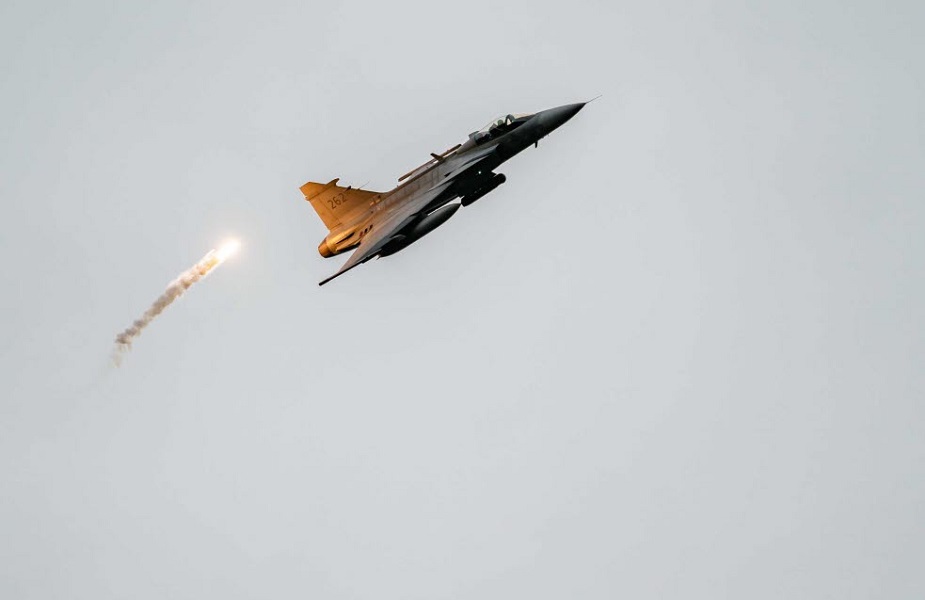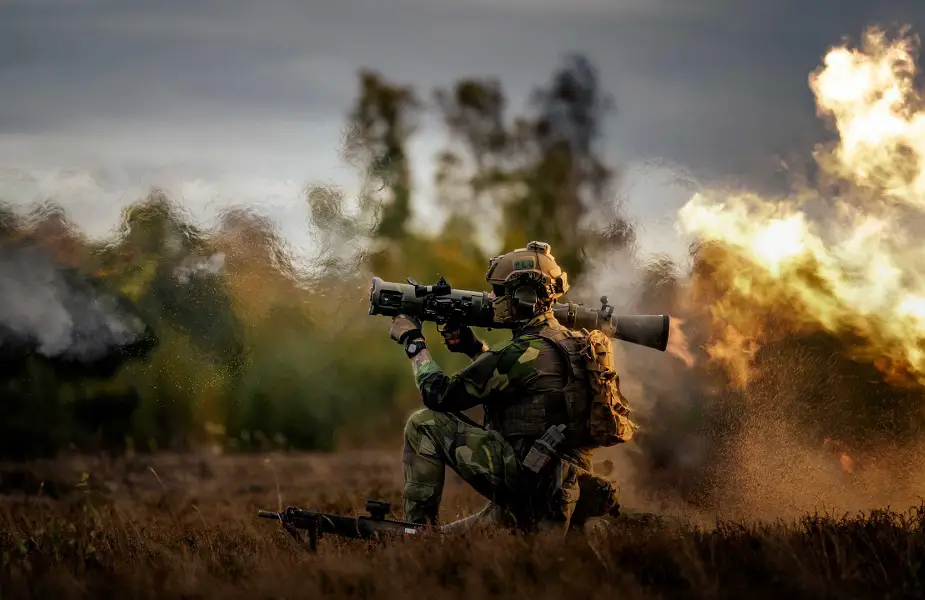Last week, the Royal Air Force (RAF) has been participating in intensive warfighting training with the Swedish Air Force as part of the Joint Expeditionary Force (JEF).
Follow Air Recognition on Google News at this link
 Close Air Support (CAS) is called in when there are ground targets that can be fought with the air force’s automatic cannon (Picture source: Swedish Air Force)
Close Air Support (CAS) is called in when there are ground targets that can be fought with the air force’s automatic cannon (Picture source: Swedish Air Force)
Two RAF Eurofighter Typhoons from 6 Squadron at RAF Lossiemouth and two Swedish JAS-39 Gripens conducted the routine training exercise in the vicinity of Ravlunda Range in southern Sweden.
The training provided an opportunity for the Joint Expeditionary Force partners to plan and deliver high-value training as part of the continued development of Joint Expeditionary Force interoperability.
The exercise scenario was that the RAF and Swedish aircraft were required to repel an attack from a hostile maritime landing force along Skåne's east coast.
The RAF Typhoons attacked targets on the ground and at sea, up to 2km from the coastline, with inert Paveway IV munitions. Meanwhile, the Swedish aircraft provided protection from threats in the air.
These attacks were coordinated by Swedish ground units, known as Joint Terminal Attack Controllers, who identified the targets and then marked them using smoke grenades.
 Swedish staff fired a smoke-shell, with the purpose of marking targets in the terrain. (Picture source: Swedish Air Force)
Swedish staff fired a smoke-shell, with the purpose of marking targets in the terrain. (Picture source: Swedish Air Force)
“Swedish ground units of the Southern Military Region guided UK Eurofighter Typhoon aircraft to strike against ground and sea targets. At the same time, the UK fighter aircraft were protected from air threats by Swedish JAS 39 Gripen”, says Colonel Per Nilsson, Chief of Southern Military Region.
The Joint Expeditionary Force is a British-led force comprising of 10 partner nations. The purpose of Joint Expeditionary Force is to act as a rapid response force in times of crisis. Joint Expeditionary Force can act on its own in a time of crisis or together with NATO.
This activity is routine, pre-planned training between two Joint Expeditionary Force partners and was not related to recent Nord Stream leaks in the Baltic Sea.
















